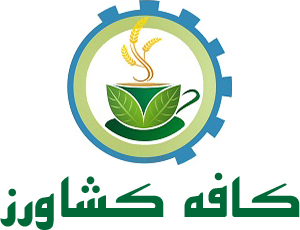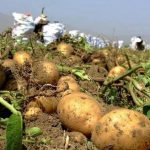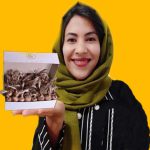Mint leaves are rich in bioactive substances, especially volatile compounds and many phenolic compounds, which have many positive benefits for human health and can be used to prevent many diseases.
So Due to the importance of this plant, there are more needs for dry medicinal products and high quality aromatic mint. Changes in textural and aromatic profiles of essential oils were evaluated by GC-MS method and electronic nose technology.
The volatile content of peppermint essential oil is different in different drying methods, which leads to different quality of essential oil.
Traditional methods of assessing essential oil quality are relatively complex, with low efficiency and generally destructive.
An efficient non-destructive testing method is essential to guarantee agricultural production and consumer rights. Therefore, this paper used the non-destructive testing technology of an electronic nose coupled with the GC-MS method, together with the chemometrics method, to realize the quality identification of peppermint essential oil in different drying methods.
The effect of 8 drying methods was investigated. The highest amount of essential oil and essential essential oil compounds was obtained in the HAD drying method, but with increasing temperature and drying air speed, its amount decreases, also the worst drying method was the sun drying method.
The three main compounds of the essential oil were Carvone, Limonene and Carveol. Also, the highest classification percentage related to QDA and MDA methods was equal to 100%, and the accuracy of ANN method was also equal to 96.7%.
About mint
With more than 200 genera and 3000 species, mint is very important from the economic and medicinal point of view. The mint genus contains 25 to 30 species that grow in different temperate regions of Asia, Europe, Australia and South Africa. A lot of diversity in terms of chemical composition is observed among the species of the mint genus.
Essential oil and mint extract are used in pharmaceutical, cosmetic and food industries all over the world. Mentha essential oil and leaves
Spicata has therapeutic uses and its general properties are analgesic, tonic, stomachic, antitussive, antispasmodic, astringent, analgesic and sedative.
Many researches confirmed caron and limonene as its main components. Carvone is responsible for the smell of peppermint essential oil.
For example, Europeans enjoy the scent of Carvone. The use of medicinal plants in the food and pharmaceutical industries depends on the amount of biologically active substances and their chemical composition.
Dry mint plant
The concentration of mint volatile compounds during drying also depends on several factors, including drying conditions (temperature, air speed), humidity, variety and age of the plant, weather, soil, and harvesting method.
The drying process and storage conditions of the dried plant can have an adverse effect on the medicinal properties of the essential oil.
Be Drying is one of the efficient methods for preserving agricultural products and preserving the quality of food.
Drying is used as an important food preservation technique in the food industry.
Drying is needed to reduce the water activity of the product to suppress the growth of microorganisms and to stop chemical reactions to increase the shelf life of the product at room temperature. In addition, drying makes it lighter to carry and take up storage space.
Drying is a complicated process due to the simultaneous transfer of mass and heat, which causes adverse changes, including a decrease in the quality of the final product.
Enzymatic and non-enzymatic reactions may occur during the drying process, when it is carried out under different conditions.
The conditions lead to considerable diversity in the composition of secondary metabolites. Therefore, the appropriate drying method should be selected to optimize the yield of target phytochemicals.
Electronic nose
As a machine olfactory system, the electronic nose can mimic the human nose and recognize complex patterns just like the human olfactory system.
This system consists of three parts: sample transport system, A detection system consisting of a group of gas sensors with detailed specifications and a data processing system.
The e-nose tool can detect the presence of VOCs in various molecular structures with high accuracy and reliability regardless of more or less odor.
Resource
Rasakh, Mansour and others (2023), the effect of different drying methods on the quantity and quality of peppermint essential oil using electronic nose and gas chromatography/mass spectrometry. Environmental science studies











